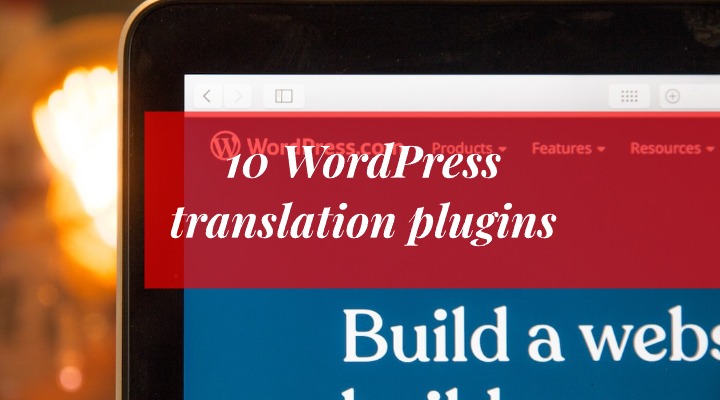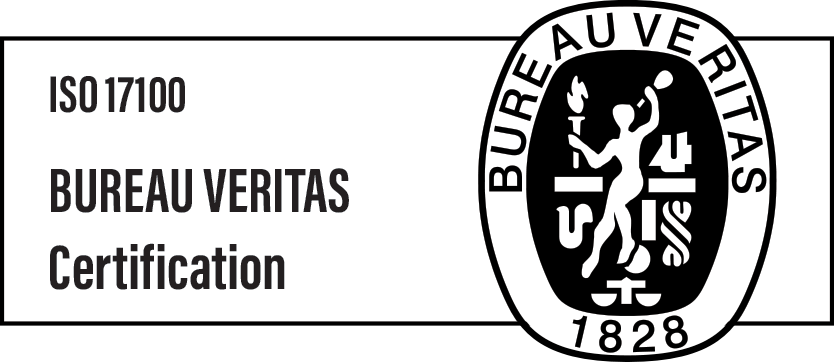10 plugins to translate your WordPress website

If your business is international or global, having a multilingual website can significantly accelerate the penetration of foreign markets. However, developing new content in additional languages can be tedious and time-consuming. That’s why website owners often use the faster solution of installing translation plugins. Today, we’ll look at the ten most popular WordPress site translation plugins and show you how you can use them.
Currently, as many as two-fifths (43% to be exact) of all websites are created and hosted on WordPress, which shows the incredible popularity of this CMS. WordPress is available in multiple languages at its core, but it does not provide translation services to run a website in various languages. To do so, you need to use a translation plugin.
Types of WordPress translation plugins
All available CMS WordPress translation plugins can be divided into two broad categories:
- Those that provide multilingual options
- Those with automatic translation features.
Most plugins offer both, but only in a paid version. The automatic option uses an algorithm to rephrase your WordPress website. This method is quick but can lead to errors and incorrect phrases, as computers are not 100% accurate.
In other words, you will have to develop new content or hire someone to translate your entire site through manual translation. Although manual translation can be costly and time-consuming, it ensures that you will get flawless translation along with the all-important localisation of texts. For quick and accurate effects, you can use automated translation and then consult the content with a professional translator and manually correct any errors.
A high-quality WordPress translation plugin can enhance your website in all global markets, but finding the best one can be a bit complicated. So, let’s look at the key features of the ten most popular WordPress translation plugins.
List of the ten best WordPress translation plugins in 2022
Knowing what your options are when it comes to WordPress translation, let’s take a look at the best WordPress multilingual and automatic translation plugins in 2022.
1. Loco Translate
Loco Translate is one of the most favoured WordPress translation plugins, with more than one million active installations. It lets you create a multilingual site smoothly. If you use a ready-to-translate WordPress theme or plugin, Loco Translate can automatically translate them, making the necessary translation files for each language.
Loco Translate is available in free and pro (paid) versions. The pro version allows you to assign roles and permissions to translators, so you can invite an unlimited number of translators to help you correct errors resulting from automatic translation.
2. Polylang
This translation plugin can translate your site into several foreign languages. An essential advantage of this plugin is that it automatically copies all your files when you add a new page in the following language with one click. After that, your role will be only to add the translations of the texts you develop or that you get from a professional translator. The base plugin is free, and you must pay €99 for the pro version for one site.
3. WPML
The WPML, i.e., WordPress Multi Language, plugin is also a solid player on our list. It contains an easy-to-use interface for adding translations and managing multilingual content on your website. In addition, WPML supports all post types, taxonomies, custom fields, strings generated by themes, and WordPress plugins.
WPML has two options for multilingual blogs and multilingual pages (CMS). You will need the CMS for e-commerce, page builder support, custom fields, translation team management, and other features. The plugin also allows you to connect your site to third-party translation providers. WPML is a paid solution. Its installation costs $29 for the multilingual blog version and $79 for the multilingual CMS.
4. TranslatePress
TranslatePress is ideal for manual translations. You can translate your site yourself or assign the role of a custom translator user to any other user on your site. These users can translate content without access to the administration area. With TranslatePress, you can solve not only content but also themes, plugins, and even metadata without changing the interface.
If a manual translation is time-consuming, you can also use Google Translator for machine translation. This approach allows you to use artificial intelligence-based translations with manual corrections. TranslatePress is a paid plugin starting at €79 for a personal license.
5. Weglot Translate
Weglot Translate is a relatively new plugin that has been an undisputed success and has become very popular quickly. With a 5-star rating, the average is 4.8, which is impressive considering that it already has more than 40,000 active installations to its credit.
The plugin owes its popularity to several available features, including the ability to collectively work on translations, support for both manual and automatic translations, and automatically redirecting users to the appropriate site version based on device/browser language. It is a paid solution, and Weglot Translate prices start as low as €9 for single pagination of up to 10,000 characters.
6. GTranslate
GTranslate is a translation plugin with rich features in both free and paid versions, which has already had more than 400,000 active installations. The plugin was developed specifically for WordPress and automatically connected to Google Translator API, downloading translations for any supported languages.
GTranslate also allows you to add a language switcher to translate web pages easily. You can also automatically translate content based on the language of the user’s browser. The plugin is available in free and paid versions, allowing the translated content to be indexed by search engines.
7. Google Language Translator
Currently, more than 100,000 websites have this plugin installed. Google Website Translator allows you to use Google’s Translator API to translate your site’s content. In addition, it uses Google’s default translation button, which you can display anywhere on your site.
Like the conventional Google Translator, it is a free WordPress translation plugin, but also, like the translation tool, the plugin does not provide fully reliable translations, free of grammatical or spelling errors.
8. MultilingualPress
MultilingualPress is a plugin that provides many compelling solutions and works perfectly with any platform. It allows you to translate your website neatly. The plugin also supports the creation and management of online stores.
This plugin is available in 3 different plans. The most basic solution costs $99 per year. The significant advantage of MultilingualPress is its excellent integration with other plugins, including Gutenberg, Yoast SEO, WPlang, WooCommerce, and MailPoet. In addition, MultilingualPress offers many configuration options, such as the ability to modify fixed URLs or create custom language switches.
9. Xili-language
The Xili-language plugin is a simple recipe for a multilingual site on WordPress. This plugin is free and allows you to create pages in different languages. Importantly, it enables you to translate all files in the CMS. In addition, the plugin has very high automation of operation and an extensive range of features.
Xili-language can be challenging to use, as web developers and programmers created it. You should also notice that it is only compatible with dedicated themes.
10. WPGlobus
WPGlobus lets you manually translate pages, posts, categories, menus, tags, and widgets. This plugin offers all the necessary parts to translate your site and manage translations. In addition, it can switch the frontend language and the option to change the language in the admin interface.
WP Globus also allows you to add more than one language and supports Yoast SEO and All-in-One SEO Pack. However, premium add-ons are required to translate URLs, language-specific keywords, or WooCommerce translation.
WPML vs Weglot
If you’re a website owner looking to expand your reach to audiences around the world, professional translation services are essential.
When it comes to professional translation services for WordPress websites, WPML and Weglot are two popular options worth considering. WPML, which stands for WordPress Multilingual Plugin, is a comprehensive translation management solution. It offers a range of features to facilitate seamless translations, allowing users to create multilingual websites with ease. On the other hand, Weglot is a freemium WordPress translation plugin that provides professional translation services as well. It offers an intuitive interface and simplified translation management, making it accessible to users of all skill levels. Both WPML and Weglot cater to the needs of multilingual websites, but they differ in terms of pricing structure and user experience. Ultimately, the choice between WPML and Weglot depends on the specific requirements and preferences of the website owner.
WPML Pros:
- Comprehensive Translation Management: WPML offers a wide range of features and tools for managing translations effectively. It allows users to translate all types of content, including pages, posts, custom post types, and even themes and plugins.
- Extensive Language Support: WPML supports a vast number of languages, making it suitable for websites targeting diverse international audiences. It enables users to easily add new languages and manage language switchers.
- SEO-Friendly: WPML is designed with search engine optimization (SEO) in mind. It ensures that translated content is properly indexed by search engines, helping websites maintain their visibility and rankings across different languages.
- Strong Community and Support: WPML has a large and active user community, which means there are numerous resources available for troubleshooting, tutorials, and best practices. The official WPML support team also provides timely assistance to users.
WPML Cons:
- Cost: WPML is a premium plugin, and its pricing can be a potential drawback for budget-conscious users. The plugin offers different pricing tiers based on the number of websites and features needed, which may not be suitable for everyone.
- Complexity for Beginners: While WPML provides extensive functionality, its feature-rich nature can be overwhelming for novice users. It may require some time and effort to fully understand and utilize all the available features.
Weglot Pros:
- Ease of Use: Weglot prides itself on its user-friendly interface and simplicity. Setting up the plugin and translating content is straightforward, making it accessible to users of all skill levels.
- Automatic Translation: Weglot offers automatic translation using machine translation engines, which can save time and effort in the translation process. Users have the option to edit and improve the translations manually if needed.
- Cost-Effective: Weglot offers a freemium pricing model, allowing users to access basic translation features for free. Paid plans are available for additional features and higher translation volume, catering to different user needs.
- Quick Integration: Weglot can be easily integrated into WordPress websites without requiring complex technical configurations. It works seamlessly with various themes and plugins.
Weglot Cons:
- Limited Customization: Compared to WPML, Weglot may have limitations in terms of customization options for translations. While users can edit translations, the level of control may not be as extensive as with WPML.
- Machine Translation Accuracy: Although Weglot offers automatic translation, the quality and accuracy of machine translations may not always meet the standards of professional human translations. Manual editing might be necessary to ensure accuracy.
In conclusion, WPML and Weglot offer different advantages and disadvantages. WPML provides a comprehensive and feature-rich translation management solution, while Weglot emphasizes simplicity and affordability. The choice between the two ultimately depends on the specific needs, budget, and technical proficiency of the website owner.
As businesses expand globally, it becomes crucial to cater to multilingual audiences. Thankfully, the WordPress platform makes it simple to translate your website using language plug-ins like WPML or Polylang. However, when it comes to choosing the best WordPress translation plugin, there are alternatives to consider, such as the popular Loco Translate and the automated WordPress auto translate function using Google Translate. With the right multilingual SEO strategy and translation solution, your website can reach a wider audience and improve user experience by providing content in different languages. It’s important to choose a plugin that suits your needs and preferences without compromising on quality.
If you’re looking to make your WordPress website more accessible to a global audience, incorporating a language plug-in is a must. With the help of a language plug-in, you can easily translate your website into multiple languages and cater to a wider audience. Among several WordPress auto translate plugins available in the market, Google Translate stands out as a reliable choice that automatically translates your website into different languages. Apart from being a handy tool for making your content available to a wider audience, multilingual SEO plugins also help improve your site’s visibility on global search engines. By incorporating any of the ten plugins available in the market, you can take your website’s reach to the next level.
WordPress site translation automatic or manual – which to choose
There is no doubt that automatic translation has its advantages. First of all, it reduces the time to create a multilingual site. However, the text delivered automatically may contain spelling or syntax errors. Moreover, a website translated this way does not demonstrate the company’s professional approach and detracts from its seriousness.
In addition, it is worth considering the issue of localisation of the translation, that is, its adaptation to a specific country, environment or market. A translation is intended to convey the message of the original text as accurately as possible, while a localisation service involves adapting the content in question for a specific audience. Without knowledge of the culture of the language and distinct society, it isn’t easy to do this.
Any product or service you intend to introduce to a foreign market should undergo localisation. If you want your business message to reach and be understood by a foreign customer, it should be tailored to their language and culture. Therefore, we recommend working with a professional LSP to translate your website content.
If you need to translate your website into Polish – our linguists are at your service. They are second to none in translating from different languages to Polish. Therefore, you can be sure that you will receive a text that is not only grammatically correct but also adequately designed to reach a Polish audience, break language barriers and help you get to your target market effectively.
Localizing content for a website can be a challenging process, but using localization plugins can make it much easier. Translating content into other languages is an essential part of globalizing a website, and there are now many great options available in the WordPress plugin repository to help automate the process. Just search for “localization plugin WordPress” and see how many results you get. With these tools, websites can quickly and easily add language capabilities and customize content according to regional preferences, making them more accessible to audiences around the world.
Also read:

